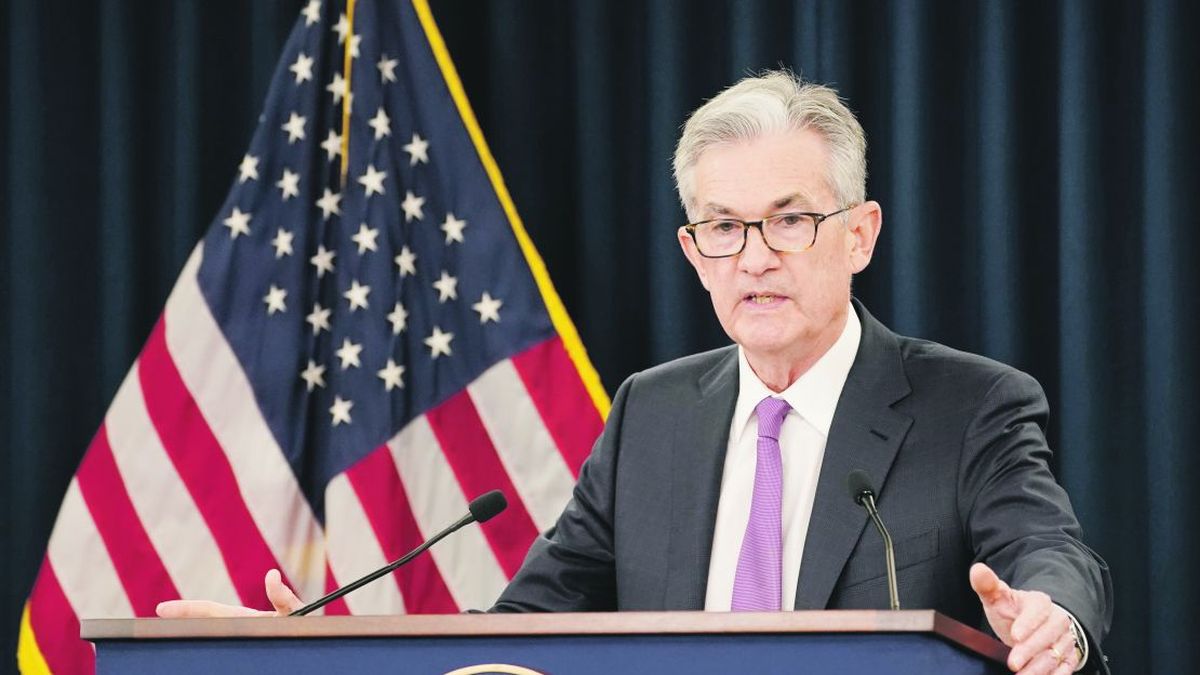“The Fed’s more restrictive policy is not good news for Argentina. Our country is in a very vulnerable internal economic situation, and the fact that there is less liquidity in the world and that rates increase does not help us. If the world sneezes, Argentina catches a cold”, he pointed to Ambit Eugenio Marí, Chief Economist of the Fundación Libertad y Progreso.
“The impact for our country is twofold. On the one hand, pressures a depreciation of currencies in emerging economies and, on the other, to a drop in commodity prices. Although this last impact is not yet being seen in the world, it is due to the effects of the Russia-Ukraine war, which directly hit two of the world’s main grain exporters,” added Marí.
The economist also argued that as the Fed’s monetary tightening deepens, “the situation will become more and more challenging”. “The BCRA’s policy of delaying the official exchange rate and using the dollar as an inflationary anchor will become less and less sustainable. And it will also have a real impact, because terms of trade will worsen, uncertainty will increase and there will be less probability of absorbing investments”, remarked Marí, who concluded: “Given that we are already in a vulnerable situation, if the recessive cycle is confirmed in the world, in Argentina we will also see it, but strengthened”.
According to different analysts, part of the The Fed’s contractionary policy has already been “discounted” on Wall Street. In any case, they warn about the impact it can have on emerging markets.
“If the two previous cycles of interest rate hikes and restrictive monetary policy are analyzed (one was between 2004-2006 and the other between 2015-2018), the one we see most similar to the one now is the one from 2015-2018”, he pointed to Ambit Maximiliano Donzelli, Head of Research at IOL Invest OnLine. “What happened in that moment? In December 2015, a process of raising interest rates began, which could be analogous to what happened earlier this year and in early 2018, the Fed began with the ‘quantitative tightening’, which is what he started doing on June 1st. Which is basically start remove liquidity from the financial system. Not only does it no longer issue, and it raises interest rates, but it also begins to lower the monetary base”, he added.
“When 2018 is analyzed, the market begins to make the correction at the end of that year (a 20% correction). But now, A large part of the restrictive monetary policy of the United States, both the rise in interest rates and the fall in the monetary base, has already had an impact on the market”, analyzed Donzelli, and detailed: “We understand that a large part of the restrictive monetary policy is already discounted in the fall we had in the market, with the S&P500 down almost 20%, the Nasdaq more than 20% and the Dow Jones less than twenty%”.
In any case, the analyst remarked that they do observe from IOL a greater risk of correction in emerging markets. “In 2018, when the drop in the monetary issue began, had a very strong impact on emerging. Whereas today, when we look at the major emerging indices, we see that many of those indices are in a positive return situation: Brazil, a little can be Argentina, Mexico, Chile, Peru, Turkey. This, in part, has an explanation that the Ukraine-Russia conflict led to a very strong increase in raw material and these countries are exporters of raw materials. But in this case we are cautious: because although the S&P500 has already corrected much of it, emerging did not correct anything in relation to this news. There we see the greatest potential risk and where, especially in markets that rose a lot like Brazil, we mark caution and a certain reduction of positions in those markets”, he stressed.
For his part, Nicolás Galarza, CEO and founder of the app Quiena Inversiones, assured that “We are facing market conditions that have not occurred many times in history”. “The mission that the Fed has to reduce inflation without entering a recession requires a very delicate balance of all the variables, in a context where risk factors continue to appear on several fronts. The reduction in its holding of assets, given that these will pass into the hands of the private sector, will inevitably result in a drop in the banking system’s reserves. This lower liquidity does not usually favor riskier assets, such as stocks,” he maintained.
In any case, Galarza also explained that, “however, until now the Fed’s moves have been well anticipated, with no major surprises, and many times this is what matters to validate that current prices already have future scenarios incorporated”. “A good sign to look for at this time is that there are no new surprises regarding the actions of the FED and the movements of macroeconomic variables. However, given the context, any unexpected change can have a big impact.“, hill.
New rate hikes in sight
The directors of the Fed remarked in the last days that the process of raising rates is far from finished. In fact, yesterday the president of the Cleveland institution, Loretta Mester, argued that the Federal Reserve you must raise them by half a percentage point at each of your next two meetings.
“LFinancial markets could remain highly volatile as financial conditions tighten further; growth could slow a bit more than expected for a couple of quarters; and the unemployment rate could temporarily exceed estimates of its long-term level,” said Mester, who noted: “This will be painful, but so is high inflation.”
In early May, the Fed defined the biggest rate hike in more than two decadesto place it in a range between 0.75% and 1%. Since June 1, moreover, it began to cut its asset portfolio of almost $9 billion with the aim of “exerting more upward pressure on the cost of borrowing”.
Source: Ambito
David William is a talented author who has made a name for himself in the world of writing. He is a professional author who writes on a wide range of topics, from general interest to opinion news. David is currently working as a writer at 24 hours worlds where he brings his unique perspective and in-depth research to his articles, making them both informative and engaging.




